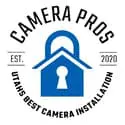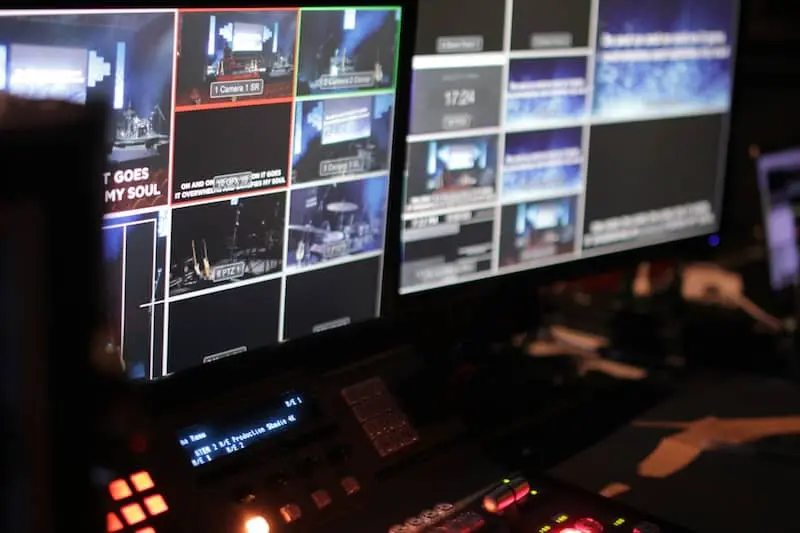Have you ever seen faint overlapping images or bright halos in your CCTV footage? It’s called ghosting. It can look like your camera is trying to do a double exposure when you didn’t ask for it. You might see a light trail chasing a car at night or ghostly outlines from previous frames showing up in broad daylight. Not only does it look unprofessional, but it can also blur out the important stuff like faces or license plates that you need to see clearly.
Your CCTV system should be your dependable watchdog, delivering sharp, usable footage every time you check it. Ghosting undermines that trust by muddying the picture and making investigations harder. However, you don’t have to just live with it. When you know what causes it, you’re already one step closer to getting a hardwired CCTV installation that delivers crisp, trustworthy video every single time.
Table of Contents
ToggleCommon Causes of Ghosting in CCTV
Ghosting in CCTV footage isn’t exactly paranormal, but it can still give you a “what was that?” moment when you see faint trails or overlapping images.
Often, the cause is hiding in your own system’s settings. Things like overly aggressive noise reduction or a slow shutter speed can make images linger longer than they should, leaving those faint afterimages behind. A calibration can usually bring frames back to being crisp and accurate.
External factors can also play a big role. Bright lights or the setting sun can create glare or washed-out spots in the frame. And in analog systems, low-quality cables and interference can cause faint “echoes” in your footage.
Once you know what’s really behind the ghosting, it’s much easier to fix and keep your CCTV video sharp and ready when you need it.
Tackle Lens Glare with Positioning and Hoods
One simple trick to banish those unwanted light “phantoms” is to adjust your camera’s angle. If headlights or streetlamps are causing halos, try rotating the camera slightly or lowering its tilt. Sometimes, shifting it just a few inches can redirect glare away from the lens entirely.
Adding a lens hood or sunshade is another option that gives your camera an extra shield. These accessories block stray light before it sneaks into the lens, cutting down on flare, especially for outdoor cameras. Indoors, matte finishes or non-reflective trim around the mounting area help absorb stray light before it hits the sensor.
Optimize Camera Settings and Firmware
Your internal camera settings are another key area to check. Ghosting often happens when exposure times are too long or when motion blur filters linger between frames. Lowering exposure a bit and increasing frame rate lets your sensor refresh faster, capturing clear transitions without overlap.
Noise reduction algorithms can also be overenthusiastic. While they help in low light, they can accidentally blend frames, creating ghosting. Dial noise reduction back to the minimum needed or apply it selectively in darker areas.
And don’t forget to keep your firmware up to date. Manufacturers often release patches that improve image processing and reduce ghosting.
Use Quality Cables and Stable Power Sources
In analog or hybrid setups, faulty connections can cause ghosting. Loose or low-quality coax cables may introduce signal reflections. Check connectors for strain or corrosion, and consider swapping in high-shielded, low-loss cables.
Stable power is just as important. Voltage fluctuations or line noise can cause your camera to skip frames, leading to ghosting. Using surge protectors and regulated power supplies designed for surveillance systems helps keep your footage smooth and reliable.
Upgrade to Better Image Sensors
If ghosting sticks around despite your tweaks, it might be time to upgrade your hardware. Older cameras with CCD sensors are more prone to ghosting, especially in tricky lighting. Newer CMOS sensors offer better dynamic range and faster readouts, cutting down on ghost artifacts.
Look for cameras with WDR (Wide Dynamic Range). They balance exposure between bright and dark areas, reducing bloom around lights and delivering cleaner, ghost-free images. When shopping for new cameras, prioritize real-world lighting performance and minimal latency, not just specs on paper.
Employ Lighting Control to Manage Contrast
Bright lights are one of the biggest culprits of ghosting, so managing your lighting environment helps a lot. Outside, you might reposition lights or swap in bulbs with lower brightness so they don’t shine directly into cameras. Indoors, diffusing harsh fluorescents or LED strips near your lenses cuts glare.
Consider installing shades or canopies near entryways where headlights frequently sweep across camera views. Controlling scene lighting prevents ghosting while boosting overall visibility and deterring unwanted activity.
Test, Inspect, and Maintain Consistently
After adjusting your settings by repositioning cameras or adding accessories, test your system thoroughly. Record footage during different times of day and light conditions. Look closely for any lingering ghosting around edges. Also, pay attention to moving objects or high-contrast zones where ghosting may appear.
Keeping a log of inspections and scheduling regular checks helps catch problems before they grow. Especially after weather changes or maintenance work, a quick visual audit keeps your system running sharp long-term.
Partner with Camera Experts for Technical Fixes
If ghosting persists despite your best efforts, it’s a good idea to bring in a professional. Specialists in Utah security camera installation can run detailed site surveys to detect wiring issues. They may also recommend hardware upgrades or update firmware on a larger scale.
Working with experts saves time and money by identifying and addressing the root causes quickly without guessing. Plus, they have access to advanced tools and techniques that can make a big difference in image quality.
Aligning Ghosting Prevention with Broader Security Goals
Eliminating ghosts allows you to have trust in your security system. Clear, artifact-free footage means you can support claims with confidence by clearly identifying intruders and accurately verifying incident times. Every frame counts when safety is on the line.
Plus, clean, ghost-free video sets you up for future upgrades like AI analytics or license plate recognition, which depend on sharp images to work right.
Ongoing Improvement Through Training and Awareness
Once your system is optimized, don’t stop there. Train your team on how to spot ghosting and adjust camera angles or clean lenses as needed. Provide quick guides so they know what to look for and how to act fast.
Encouraging regular communication about video quality helps catch issues early before they impact your security. With consistent vigilance, ghosting won’t sneak in unnoticed over time.
Keeping your CCTV footage clear and ghost-free might sound technical, but with a few smart tweaks and the right help, it’s totally manageable. Remember, a sharp, reliable system brings peace of mind knowing your property is truly protected.
If ghosting keeps popping up, don’t hesitate to reach out to a professional who can get things back on track fast. Clear footage means clearer answers, and that makes all the difference.

